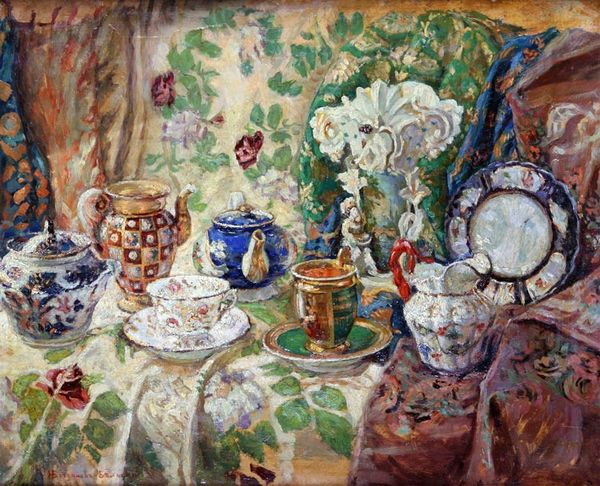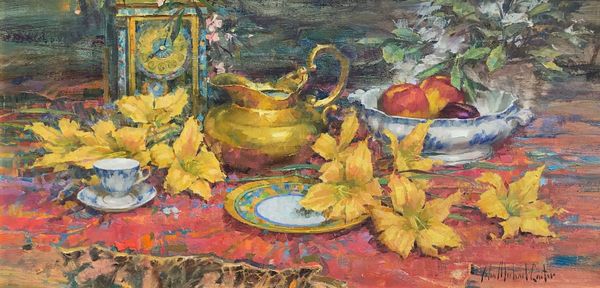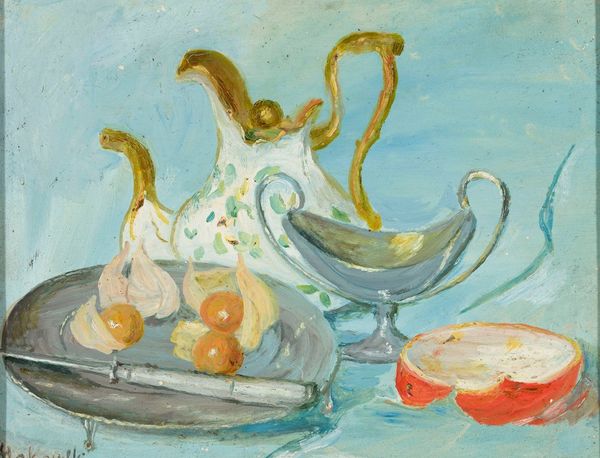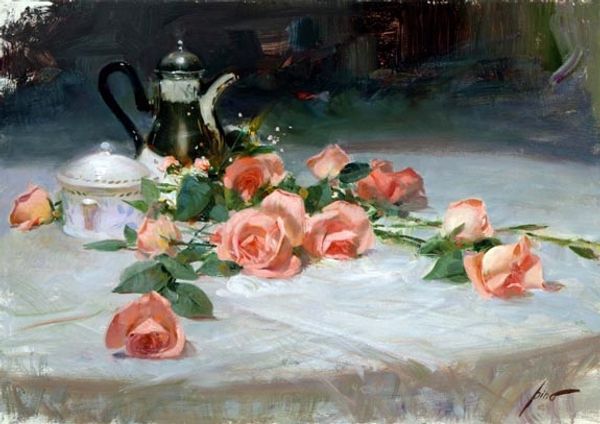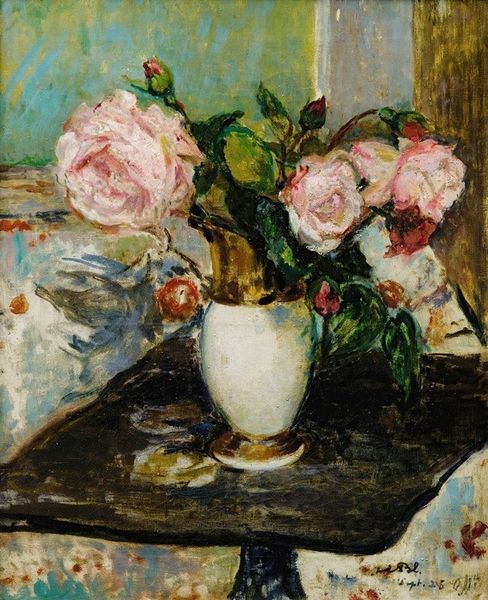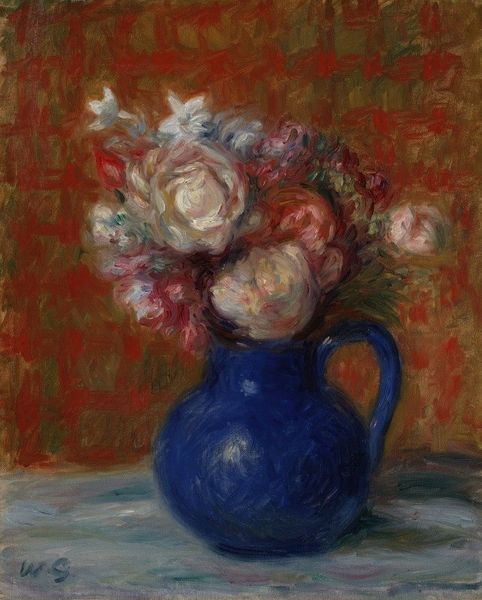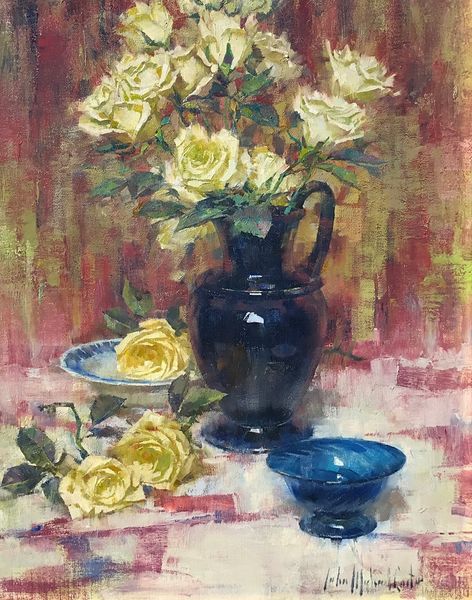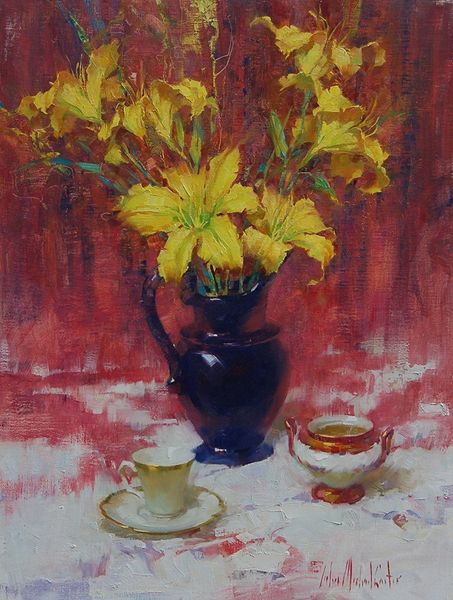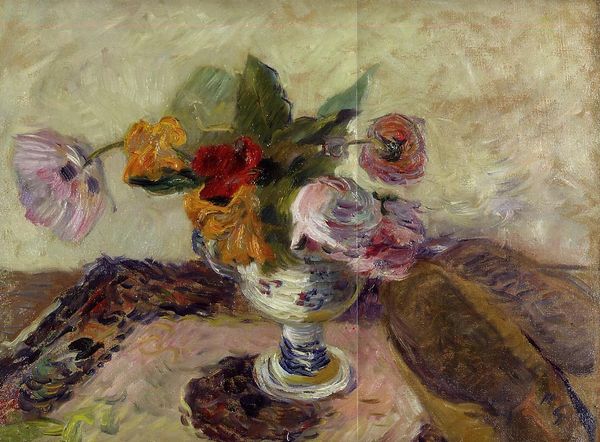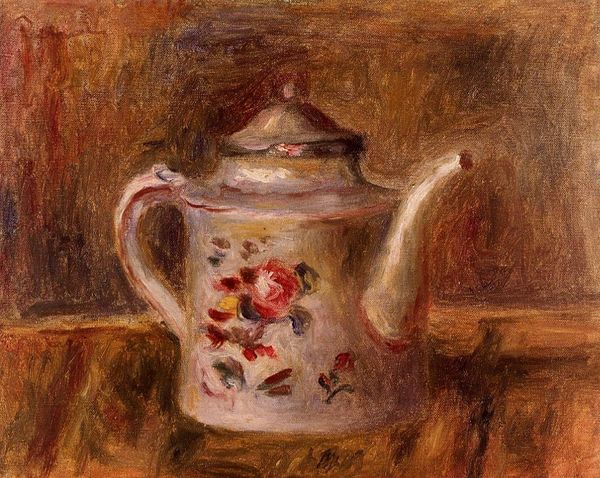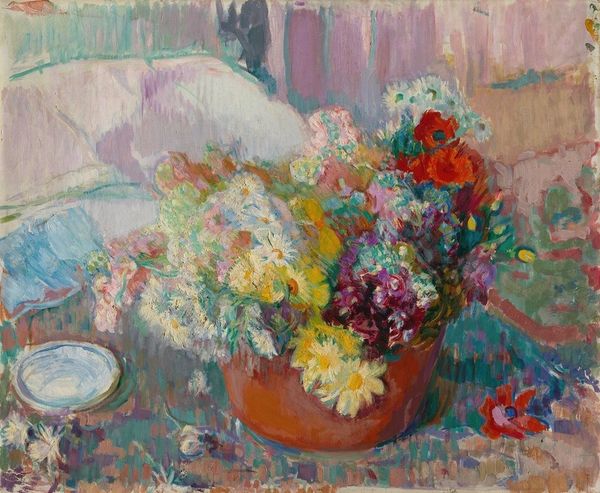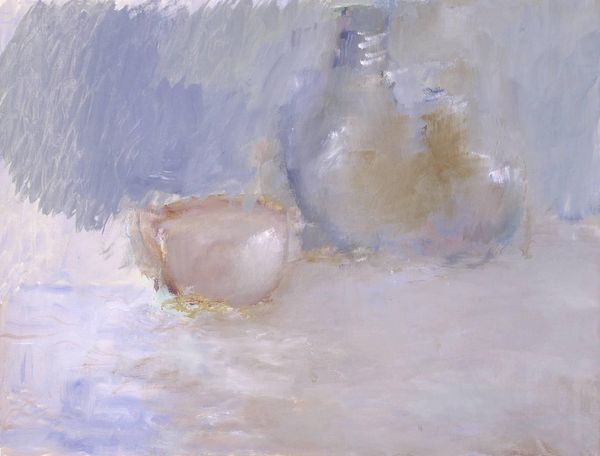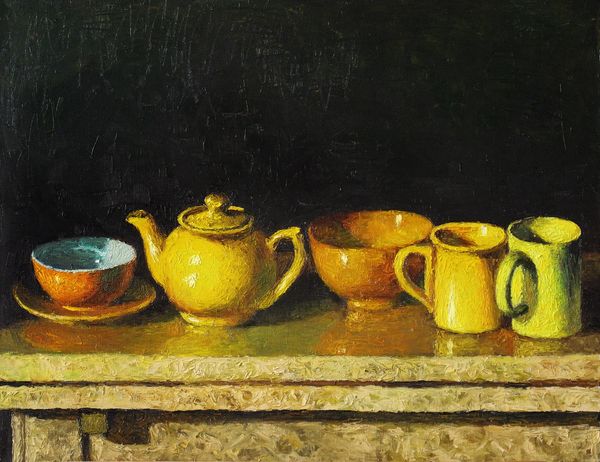
painting, oil-paint, impasto
#
painting
#
oil-paint
#
oil painting
#
impasto
#
modernism
#
realism
Copyright: Modern Artists: Artvee
Curator: Immediately striking, isn't it? There's a dreamlike quality to this still life. The brushstrokes seem to melt the objects together. Editor: Indeed. Let’s delve into John Michael Carter's "Tea Pot and Roses." This painting, executed in oil with impasto technique, is an intriguing example of a modern realism piece. Curator: The visible brushstrokes speak volumes. Look how Carter uses that heavy impasto to define the roses. There is an interest here in representing materiality itself as part of the roses’s definition, an almost crude manipulation. And see how the background is almost abstract, built with palette knife applications of the pigment? Editor: Absolutely. And I find it fascinating how a simple domestic scene—a teapot, roses—becomes a commentary on social ritual. Think of the history of tea ceremonies, the role of porcelain in aristocratic societies… Curator: Yes! We might consider where Carter sources these objects, and how accessible these items would have been for his audience, how it is an engagement with commodification! How the decorative patterns of porcelain tea sets become aspirational symbols. Editor: And also, the politics of the gallery itself, how art institutions determine what becomes valued or “high” art versus everyday objects. Where is the line here? The painting immortalizes the scene, elevates what would otherwise remain in domestic space into the world of display, into the political sphere! Curator: Which connects directly to the materiality of the work. We can sense a negotiation happening. The brushstrokes create a texture so distinct you can almost touch the scene yourself. What does it mean that impasto and texture take front and center when this would not happen with porcelain in a more refined setting? Editor: Right! It's as if the painting asks us: who defines the culture, and for whom? It makes a nice commentary, even today! Curator: In its tactile reality and exploration of everyday objects elevated by art, this painting serves as a reflection of the politics inherent in art production and reception. Editor: Well, considering art institutions have historically framed cultural meaning, it makes this piece and its presentation that much more interesting to me!
Comments
No comments
Be the first to comment and join the conversation on the ultimate creative platform.
